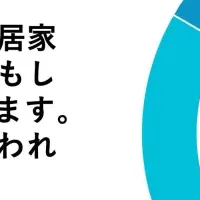
US Medical Aesthetics Market Projected to Reach $16.38 Billion by 2030
US Medical Aesthetics Market Growth
The U.S. medical aesthetics market is on a substantial growth trajectory, expected to jump from $7.62 billion in 2024 to $16.38 billion by 2030. This translates to a remarkable CAGR of 13.6% over the forecast period. Several driving factors contribute to this thriving market, including a growing aging population, the rising adoption of advanced aesthetic treatments, and the significant influence of social media on beauty standards.
Drivers Behind Growth
A surge in the aging population actively seeking anti-aging solutions illustrates a crucial driver for this market. Simultaneously, there's an increased interest in non-invasive aesthetic procedures among younger demographics who are actively pursuing preventative treatments. This interest is fueled by changing beauty ideals and social media trends that favor flawless appearances. Moreover, technological advancements in aesthetic devices continue to enhance treatment efficacy and safety.
Another factor propelling this market forward is the growing adoption of energy-based devices, which include lasers, ultrasound technologies, and radiofrequency treatments. These devices offer quick recovery times and minimal risk, making them attractive options for consumers. The increasing male demographic participation in aesthetic treatments further expands the potential market reach and applicability.
Market Segmentation
The U.S. medical aesthetics market can be broadly segmented into several categories:
1. Based on Product: This includes facial aesthetic products, body contouring devices, implants, and emulsions for skin treatment. Notably, the facial aesthetics segment remains the most significant, reflecting a high demand for cosmetic solutions such as Botox, particularly as beauty trends evolve.
2. Based on Procedures: The market consists of non-surgical and surgical procedures. The non-surgical segment is projected to experience the highest growth rates due to lower associated risks and patient-friendly recovery periods.
3. By End Users: This market is divided among clinics, hospitals, and beauty centers, with pharmaceutical and biotechnology companies leading in terms of market share. The rise in medical tourism, coupled with the increasing number of health facilities, accelerates market expansion.
Challenges and Innovations
Despite the promising outlook, the industry faces challenges such as regulatory hurdles and high costs associated with treatments, along with limited insurance coverage that hinders broader adoption. Nevertheless, the approval of innovative products by the FDA is likely to stimulate growth and mitigate these concerns.
Numerous key players are shaping the market landscape, including AbbVie Inc., Alma Lasers, and Johnson & Johnson among others. These companies are crucial in pushing the boundaries of available treatments and technologies.
Future Prospects
As consumer awareness of aesthetic treatments increases, so does the affordability and accessibility of these services in the U.S. With advancements in technology and changing societal standards, the market is positioned for robust future growth.
In conclusion, the U.S. medical aesthetics market is at a pivotal point, ripe with opportunities for businesses and consumers alike. From rising demographics seeking aesthetic solutions to technological innovations paving the way for advanced treatments, the future looks bright for this vibrant sector.
Topics Health)










【About Using Articles】
You can freely use the title and article content by linking to the page where the article is posted.
※ Images cannot be used.
【About Links】
Links are free to use.